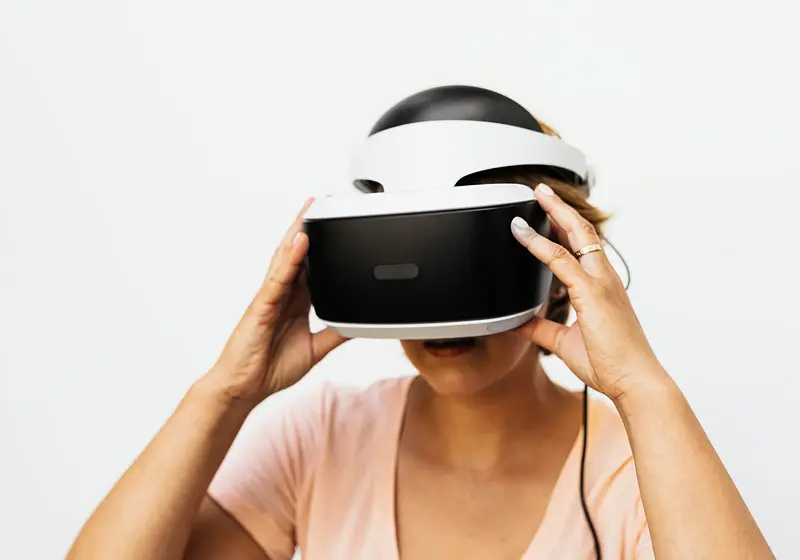The modern, allopathic, medical system has a tendency to believe that every solution is strictly biological. Just one more medicine or infusion can fix nearly any ailment. In the process, we forget the power of the mind in healing.
The mind can make the body sick, and the body correspondingly affects the mind. Every day, there are new frontiers in medicine that utilize both the body and the mind. One treatment that could have a serious impact on everything from pain to mental health is virtual reality.
Quite simply, virtual reality takes advantage of our brain’s inability to be in two places at once. Theoretically, we know that we are not on a beach or walking in a forest, but for a brief time, we can be convinced that we are in another world—a suspension of disbelief, if you will. This emerging technology has use in several areas, starting from distraction and extending to training in skills and simulating therapy.
Even five minutes on a headset, flying around Earth and walking in the mountains, can change lives. It offers people the possibility of self-transcendence, and they may not only have a better perspective of their pain but also feel awe at the magic of the world we live in. And it's only getting better, possibly incorporating smell in the future. Rachel Herz at Brown University and others have done research evaluating the possibility of creating more complex soundscapes and smells to make the experience feel more real.
The role of this new technology could change the way we view healthcare for the better. Not every condition requires medication, and training the mind can be equally or more effective in many cases. This is especially relevant for pain management in an era of increasing opioid use.
Opioid overdoses are a national crisis, largely due in part to the fact that 20% of Americans have chronic pain. Further, NSAIDs, like aspirin, can cause stomach ulcers and worsen inflammatory conditions, which necessitates the use of nonpharmaceutical interventions for chronic pain. Virtual reality is one of the interventions that is making a mark on chronic pain.
In regard to chronic pain, VR is a tool to not only uplift people but to teach them pain self-management. The program RelieVR incorporates VR and cognitive behavioral therapy to provide mechanisms for patients to psychologically reduce their pain, such as breathing exercises, meditation, interactive games, and relaxing nature escapes. But the potential is endless.
It need not be a last-ditch effort to control pain but a simple and effective part of hospital operations and daily life. The distraction and meditation facilitated by the headset could significantly lower anxiety and teach people the skills for self-management of mental health. It has been proven effective in pre-operation procedures, during childbirth, in rehabilitation, and in education.
Melissa Wong et al found that it significantly decreases labor pain and increases maternal satisfaction, and other studies have found that it has a similar effect in other gynecological procedures At the Stanford CHARIOT program, doctors are using VR to ease anxiety for children before operations. Outside of medicine, it has been shown to improve the judgment of juries in a courtroom by permitting them to see the crime scene from a more objective lens rather than based on biased descriptions during the trial.
Another software, FloreoVR, uses a headset to teach social skills to children with autism.
The implications of virtual reality are incredibly powerful, giving us a new way to not only see ourselves but the world around us. At its core, technology works by letting people get out of their heads. It takes advantage of people’s natural tendencies to weave stories about the world they live in. Virtual reality brings people back into medicine, and for that alone it is invaluable.
That's not to say that VR doesn't have its pitfalls. For example, roughly 5 percent of users experience cybersickness, causing nausea or sweating while using VR or other screens. In fact, a study done by Kay Stanney explored the reasons that make women more likely to have cybersickness, discovering that headsets are not designed to accommodate the distance of their pupils from the headset.
Moreover, VR has limited accessibility for those who have visual disorders, are hard-of-hearing, or have injuries that prevent them from wearing a headset. It's true that these are reasonably large limitations. However, VR is an emerging industry, and with further innovation, medical VR can only become more accessible.
Outside of these, like any treatment, response varies. This depends on your natural tendency to be transported into another reality. During studies, this is tested using the immersive tendencies questionaire. The higher your score on this questionnaire, the more likely VR is to be effective.
Pain is a necessary biological process, but when the cycle of pain is disrupted, it has a serious impact on the quality of life. Virtual reality is a promising method to alleviate chronic pain, but its impact could be far wider. For patients, it’s an opportunity to temporarily escape the hospital and feel at peace.
This technology connects the mind and body in unforeseen ways. Frontiers for healing with virtual reality have great potential for the future of medicine.












